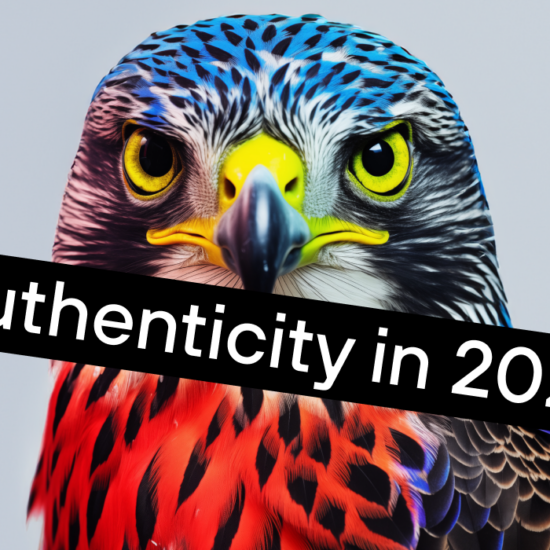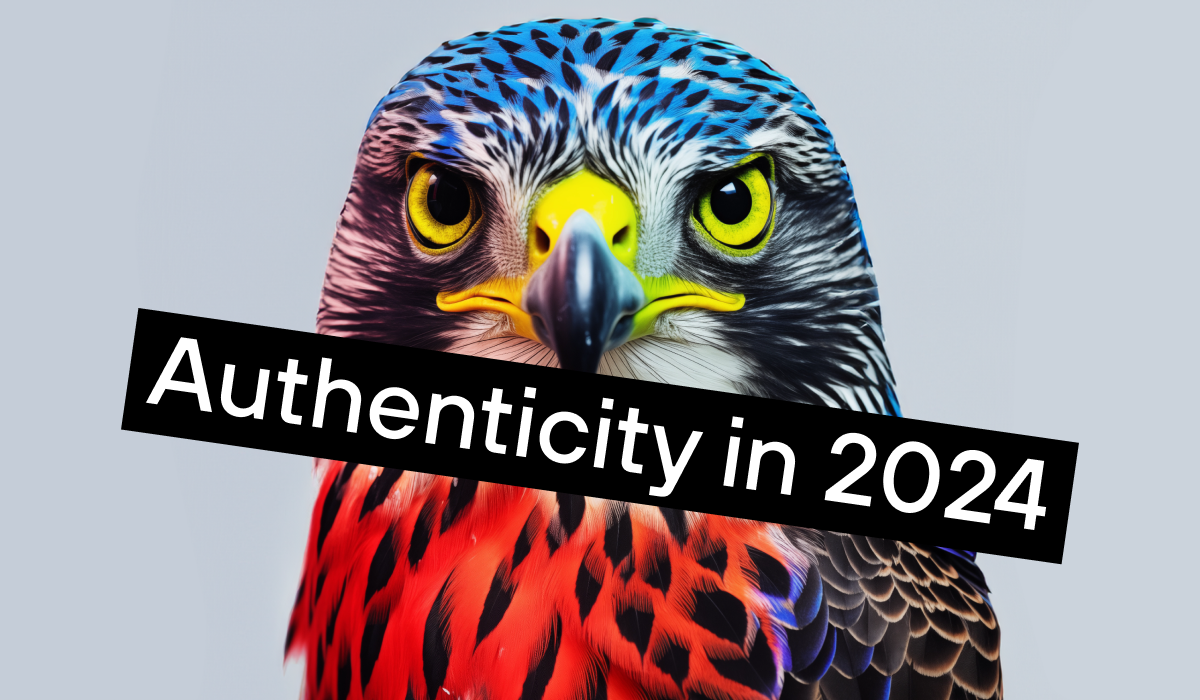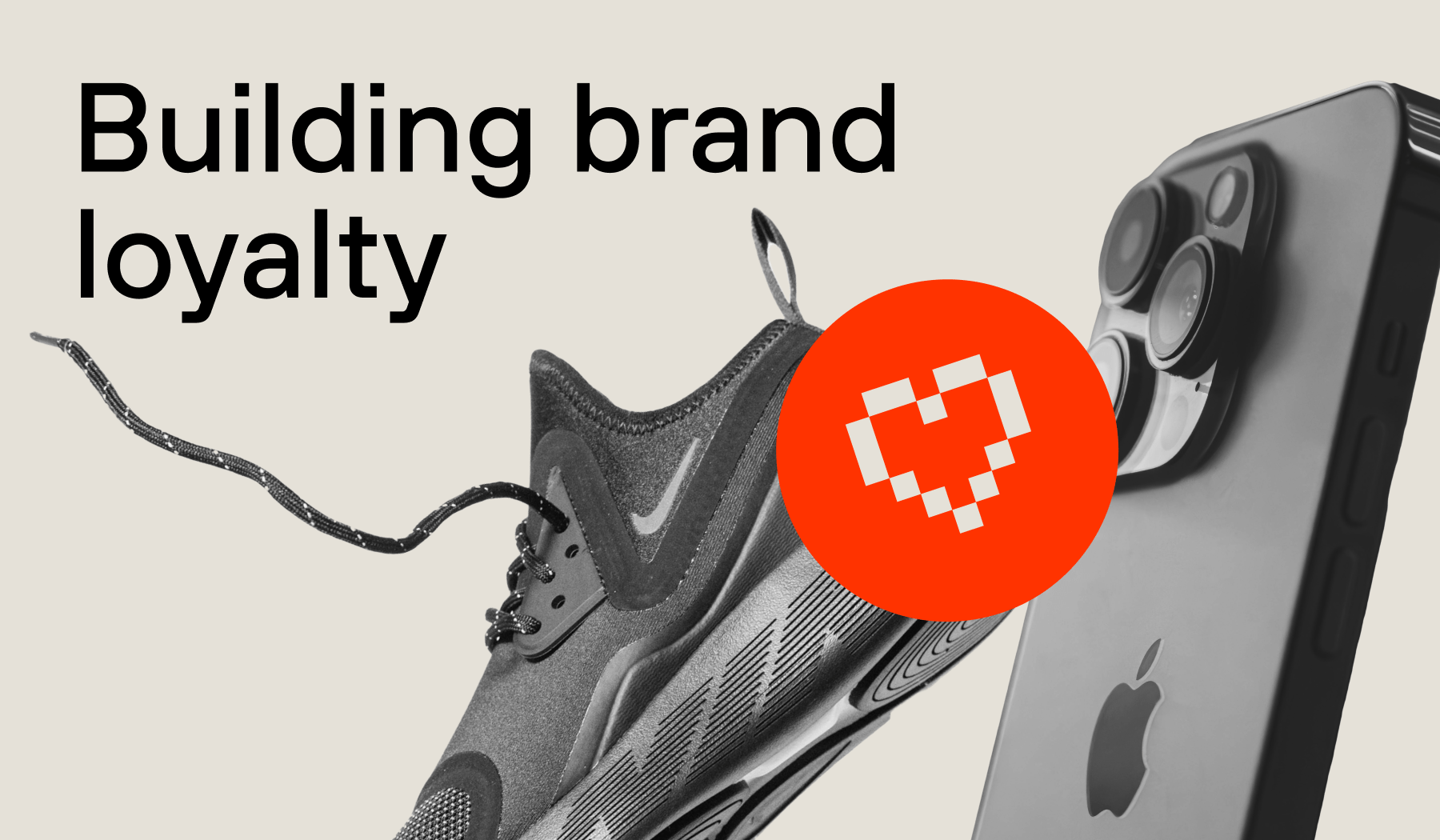
Looking to increase customer retention levels for your business? We’ve lined up a bunch of strategies for building brand loyalty that will help you to assume the role of fan favourite.
“Without loyalty, you won’t accomplish anything.”
These are the powerful words of acclaimed philosopher and theorist, YoungBoy Never Broke Again.
Actually, YoungBoy is a contemporary American rapper, but whatever. The words are no less true.
And although we’ve twisted his sentiment – from being loyal to receiving loyalty from others – the point remains: loyalty is a big deal.
Furthermore, brand loyalty is a prolific plus for any business. Loyal customers are priceless.
But how do you build and maintain brand loyalty? How do you measure it? And how does it differ from customer loyalty?
We answer all these questions and so much more in this ultimate guide to brand loyalty.
Among it all are 10 strategies for creating brand loyalty that stands the test of time.
Here’s everything you need to know…

Let’s unlock the code to cultivating brand loyalty. Credit: Alexander Sinn on Unsplash.
What is Brand Loyalty?
In marketing circles, brand loyalty relates to a customer’s tendency to repeatedly engage with and purchase products or services from the same brand and associate a positive sentiment towards that particular organisation.
This repeated activity is achieved despite genuine competition, market or societal changes, or even inadequacies with that brand.
Brand loyalty results when there is a strong, emotional connection between a customer and a company. It’s built on trust, satisfaction, and positive experiences that the consumer has with that brand.

There’s so much competition out on the park. Credit: Dan Gold on Unsplash.
Customer Loyalty vs. Brand Loyalty – What’s the Difference?
While related, customer loyalty and brand loyalty are distinct concepts.
Customer loyalty focuses on consumers’ repeat purchases from a particular business, driven primarily by convenience, habit, or price.
Meanwhile, brand loyalty is a deeper, emotional connection between customers and a brand, leading them to choose that name over competitors time and again.
Although it’s important to invest in both brand and customer loyalty, having a sharper focus on the former pays greater dividends.
While customer loyalty is valuable, it’s often transactional and can be influenced by external factors.
However, brand loyalty is more sustainable and resilient, as it’s rooted in trust and emotional connections.
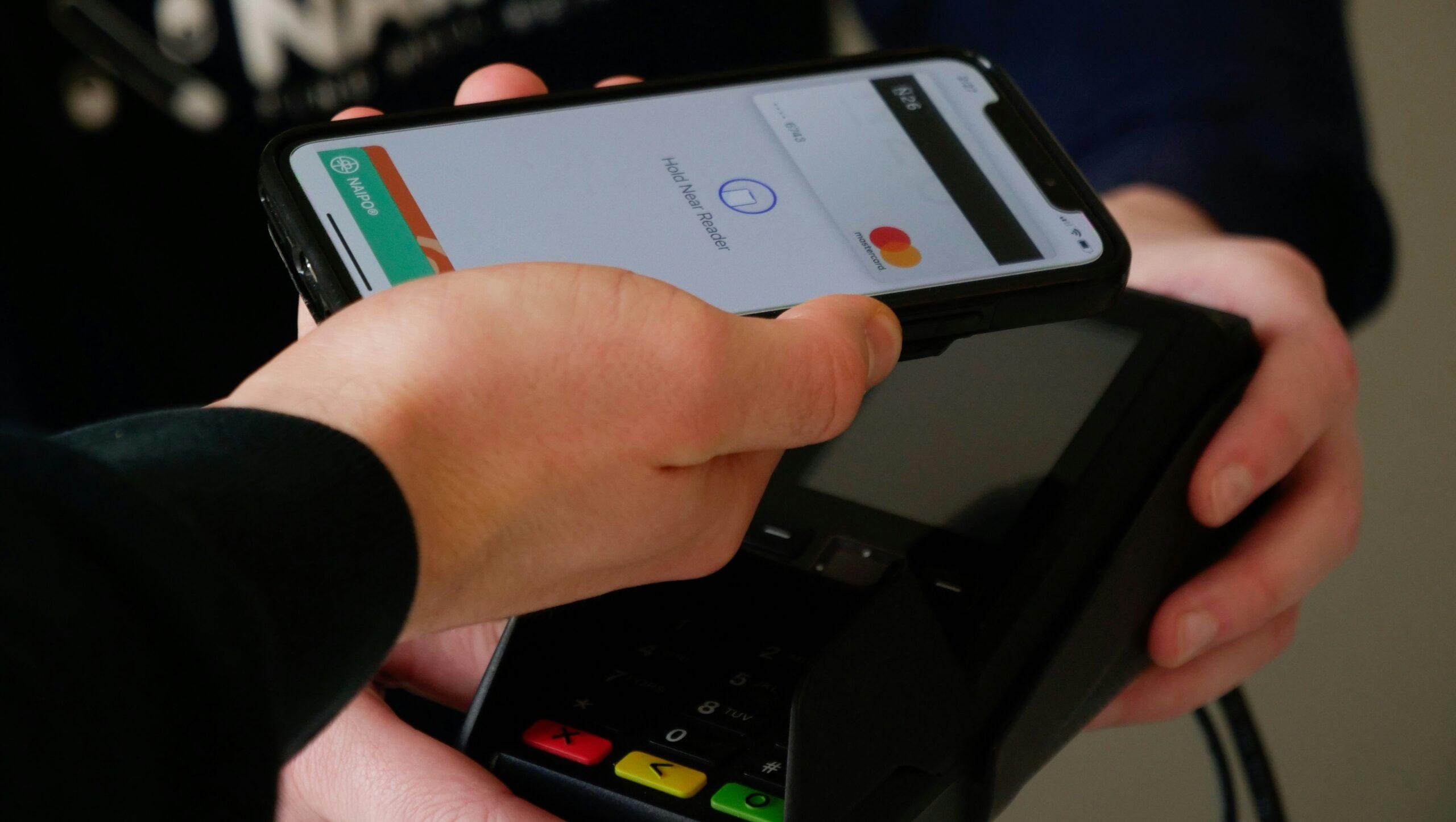
Customer loyalty is more transactional than the brand variety. Credit: naipo.de on Unsplash.
Why is it Important to Build Brand Loyalty?
Here are a handful of significant reasons that it pays to build brand loyalty:
Repeat business: Loyal customers are more likely to make sustained purchases. This reliable revenue stream can profoundly boost your company’s profitability.
Word-of-mouth marketing: Loyal customers often become brand advocates – more on that soon – spreading positive word-of-mouth recommendations within their social circles and converting them to new customers.
Cost efficiency: Obtaining new customers is often more expensive than retaining existing customers. Generating brand loyalty helps to reduce your customer acquisition costs.
Resilience to competitive pressure: Loyal customers are less likely to switch to competitors solely based on price fluctuations, making your brand less vulnerable to market changes.
Brand extensions: Loyal customers are more likely to try new products or services launched by your brand, amplifying diversification and growth.

Existing customers turning into brand ambassadors is the dream. Credit: Kobu Agency on Unsplash.
10 Strategies for Building Brand Loyalty
Ok, these are more tips than comprehensive strategies, but their importance is noteworthy.
If your business is striving to generate repeat customers, it’s crucial to implement these actions to help make it happen:
1. Deliver Consistent Quality
This is essential for generating brand loyal customers. Consumers come to rely on your brand when they consistently receive products that meet or exceed their expectations.
Quality quickly builds trust and confidence, making customers more likely to return. Consistency also ensures that customers have a predictable and positive experience with your brand every time they engage with it.
2. Exceptional Customer Service
Outstanding customer service plays a prime role in brand loyalty. When customers feel valued and respected, they are more likely to become loyal advocates for your brand.
This includes addressing inquiries and issues promptly, being courteous and empathetic, and going ‘the extra mile’ to exceed customer expectations. Exceptional customer service not only resolves problems but lays the foundation for positive emotional connections.
3. Personalisation and Customisation
Tailor your products, services, and marketing efforts to individual customer preferences, as personalisation makes customers feel recognised and appreciated. Analysing data and customer insights helps to achieve this.
When consumers receive offerings that align with their interests and needs, they are more likely to become loyal customers.
4. Build Trust and Transparency
Trust is at the heart of great brand loyalty, so demonstrate honesty and transparency in all your interactions with customers. This includes clearly communicating your brand’s values, mission, and business practices.
It also means providing information about the sourcing and production of your products. Customers appreciate brands that are open about their processes and are more inclined to trust and support them.
5. Loyalty Programs and Rewards
Implement loyalty programs that reward customers for repeat business. These loyalty programs can include points, discounts, bonuses, exclusive access, or special perks for loyal customers.
By offering tangible rewards, you not only incentivise repeat purchases but make customers feel appreciated and valued for their loyalty to your brand. There’s a lot to be said about value, even if it’s perceived value.
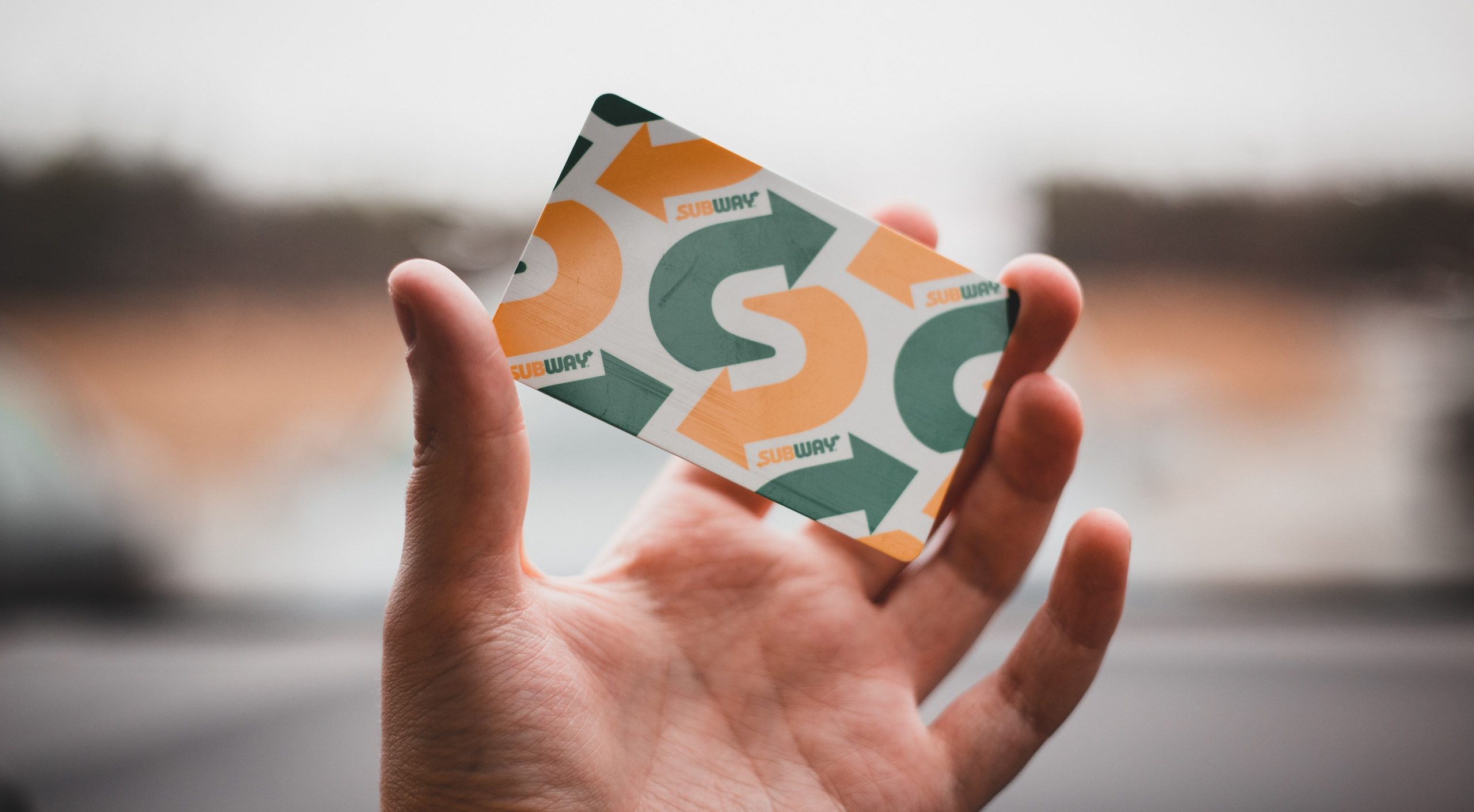
Increase brand loyalty with rewards for repeat customers. Credit: Erik McLean on Unsplash.
6. Engage in Social Responsibility
Show your commitment to social and environmental responsibility. Engaging in causes that align with your brand values can create a sense of purpose for your customers.
Whether it’s supporting a charity or cause, reducing environmental impact, or addressing social issues, demonstrating a commitment to making a positive impact can foster strong emotional connections with customers who share those values.
7. Consistent Branding and Messaging
Maintain a consistent brand identity and messaging across all touchpoints. Consistency helps customers recognise and remember your brand, creating familiarity and trust.
Whether it’s your logo, tagline, or overall brand voice, ensuring uniformity reinforces brand loyalty and reaffirms your brand’s identity in consumers’ minds.
8. Solicit and Act on Customer Feedback
Actively seek feedback from your loyal customer base and demonstrate that you value their opinions. Use surveys, reviews, and feedback channels to gather insights into their experiences with your brand.
Most importantly, take action on the feedback you receive. When customers see that their input leads to improvements in products or services, it strengthens their loyalty and engagement with your brand.
9. Create a Sense of Community
Foster a sense of community among your existing customer base. Encourage them to interact with each other and with your brand. This can be achieved via online forums, social media groups, or exclusive events.
When customers feel a sense of belonging and connection with your brand and other like-minded consumers, they are more likely to remain loyal and engaged.
10. Surprise and Delight
Occasionally, surprise your customers with unexpected gestures or rewards. These can include personalised thank-you notes, birthday discounts, or exclusive previews of upcoming products.
Surprise-and-delight moments create memorable experiences and conjure positive emotions, reinforcing brand loyalty. These unexpected acts of kindness can also lead to positive and all-important word-of-mouth marketing.
Incorporating these tips into your brand strategy can help you to build and maintain brand loyalty that lasts, ultimately leading to repeat business and enthusiastic brand ambassadors.

The occasional surprise and delight can go a long way to enhancing customer relationships. Credit: Kushagra Kevat at Unsplash.
Emotional Branding
To expand on the above, one of the most effective ways to build brand loyalty is through emotional branding.
This involves creating a strong emotional connection between your brand and its customers. To achieve this:
Tell a compelling story: Craft a brand narrative that resonates with your target audience’s values and aspirations. Storytelling has the power to engage customers on a deeper level.
Be authentic: Maintain a genuine tone in your messaging and actions. Authenticity builds trust and strengthens the emotional bond between the brand and the consumer.
Champion positive emotions: Aim to create positive emotions such as joy, nostalgia, or empathy in your marketing campaigns. These emotions create lasting impressions and connections.
Consistent branding: As we’ve touched on already, maintaining a consistent brand identity and messaging across all touchpoints reinforces the emotional connection customers have with your brand.

Share compelling stories as part of your marketing strategy/brand-building strategy. Credit: Kaitlyn Baker on Unsplash.
How Customer Experience Affects Brand Loyalty
Customer experience (CX) plays a decisive role in building and maintaining brand trust, and therefore loyalty. To create a seamless and positive CX, consider the following:
Personalisation: Customise your products, services, and marketing efforts to individual consumer preferences, creating a more personalised experience.
Consistency: Ensure a consistent experience across all customer touchpoints, whether it’s online, in-store, or through customer service channels.
Feedback loop: Solicit and act on customer feedback. This demonstrates that you value your audience’s opinions and are committed to improving its experiences.
Easy accessibility: Make it straightforward for customers to interact with your brand and access information or support when desired.
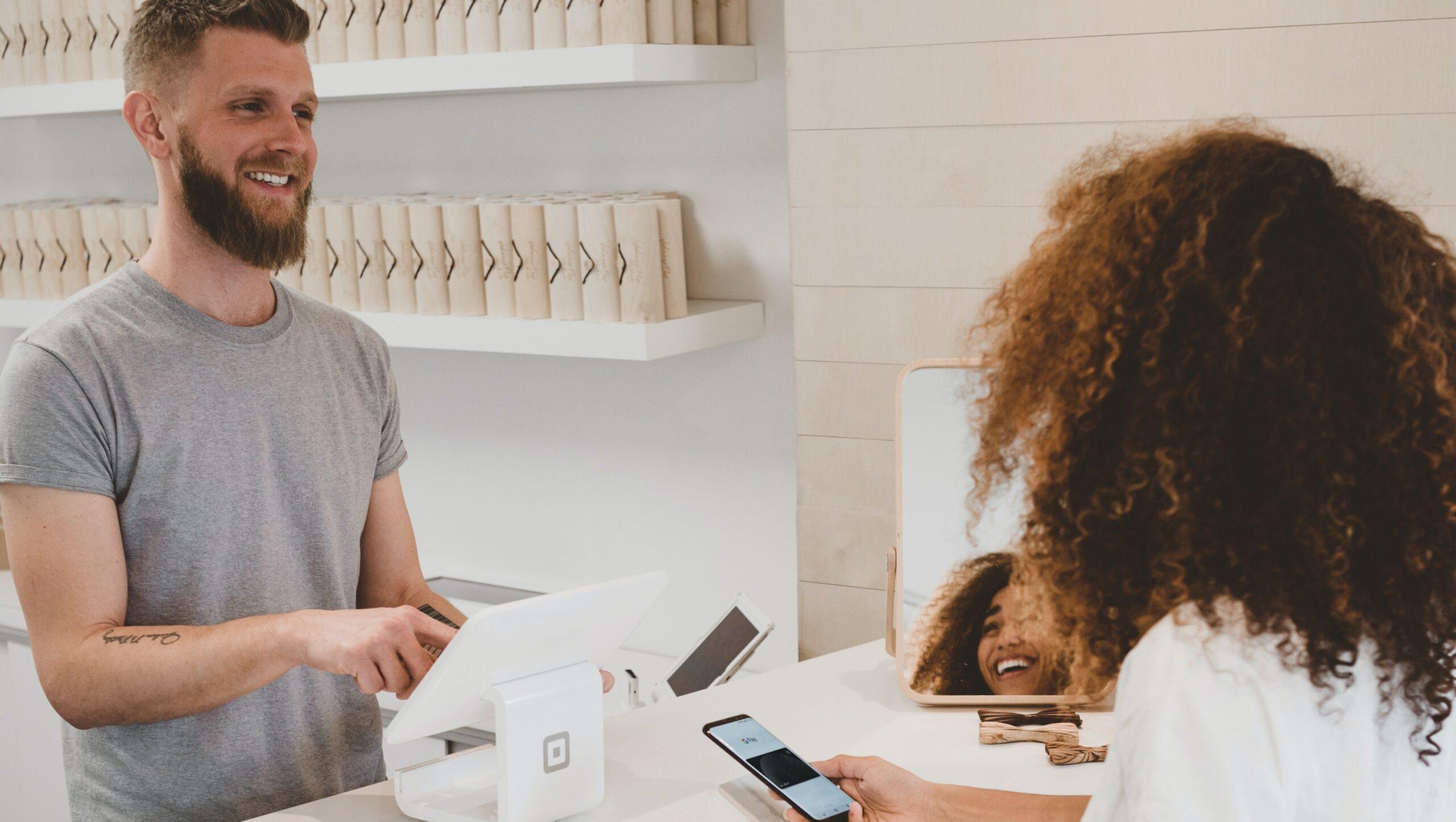
The customer experience should be consistent across all touchpoints. Credit: Clay Banks on Unsplash.
Benefits of Brand Advocates
Customers who go above and beyond in promoting your business voluntarily are money-can’t-buy assets for any business.
Here’s why they’re important:
Word-of-mouth marketing: Advocates recommend your brand to others, amplifying your reach and influencing potential customers.
Trustworthiness: Recommendations from genuine customers carry more weight and trustworthiness than paid advertising.
Cost-efficient: Building and nurturing brand advocates is often more cost-effective than traditional marketing strategies.
Loyal ambassadors: Advocates become loyal ambassadors for your brand, defending it in times of criticism or controversy and supporting it through thick and thin.

Don’t underestimate the power of word-of-mouth marketing. Credit: Priscilla Du Preez on Unsplash.
How to Measure Brand Loyalty
Measuring brand loyalty is critical to understanding the effectiveness of your strategies. Primary metrics and methods for measuring brand loyalty include:
Customer retention rate: Monitor the percentage of customers who continue to purchase from your brand over time.
Net Promoter Score (NPS): NPS measures customer satisfaction and the audience’s willingness to recommend your brand to others.
Customer Lifetime Value (CLV): Calculate the total value a customer brings to your business over its entire relationship with your brand.
Customer surveys: Conduct surveys to gather feedback and gauge consumer sentiment towards your brand.
Social media engagement: Track social media interactions, including likes, shares, and comments, to measure brand engagement.

Tap into key metrics. Credit: Stephen Dawson on Unsplash.
Tips for Maintaining Brand Loyalty
While building brand loyalty is crucial; maintaining it is equally important. Here are some tips to keep your customers loyal over the long term:
Consistent quality: Repeatedly deliver high-quality products or services to meet customer expectations.
Adapt to changing needs: Stay attuned to evolving customer preferences and adapt your offerings accordingly.
Communication: Keep the lines of communication open with your customers, addressing any issues promptly and proactively.
Surprise and delight: Occasionally surprise your customers with exclusive offers, personalised gifts, or unexpected rewards.
Community building: Generate a sense of community among your customers, encouraging them to interact with each other and your brand.

Social media community management is often overlooked to businesses’ detriment. Credit: Joshua Hoehne on Unsplash.
Examples of Companies Excelling at Building Brand Loyalty
There are loads of household names both in Australia and abroad that have achieved remarkable brand loyalty. These are just a handful of them…
Bunnings Warehouse
The home improvement and hardware store chain has nailed brand loyalty among Australians. Customers often demonstrate strong loyalty to Bunnings and prefer it for their DIY and home improvement needs.
How it’s achieved brand loyalty:
- Customer service and expertise: A brand hallmark. Its knowledgeable staff famously assist customers with their projects, offering advice and providing solutions. This commitment to customer support builds trust and loyalty.
- Community engagement: Actively involved with local communities through initiatives like DIY workshops, community projects, and charitable support. This creates a sense of connection and goodwill among customers.
- Wide product range: An extensive selection of hardware and tools, garden supplies, and home decor caters to diverse customer needs – making it a one-stop shop for homeowners and DIY enthusiasts.
- Value for money: Driven by its ‘lowest prices are just the beginning’ slogan. Customer perception dictates that Bunnings offers value for money, encouraging repeat visits.
- Australian heritage: Has a strong local flavour with an instantly recognisable logo.
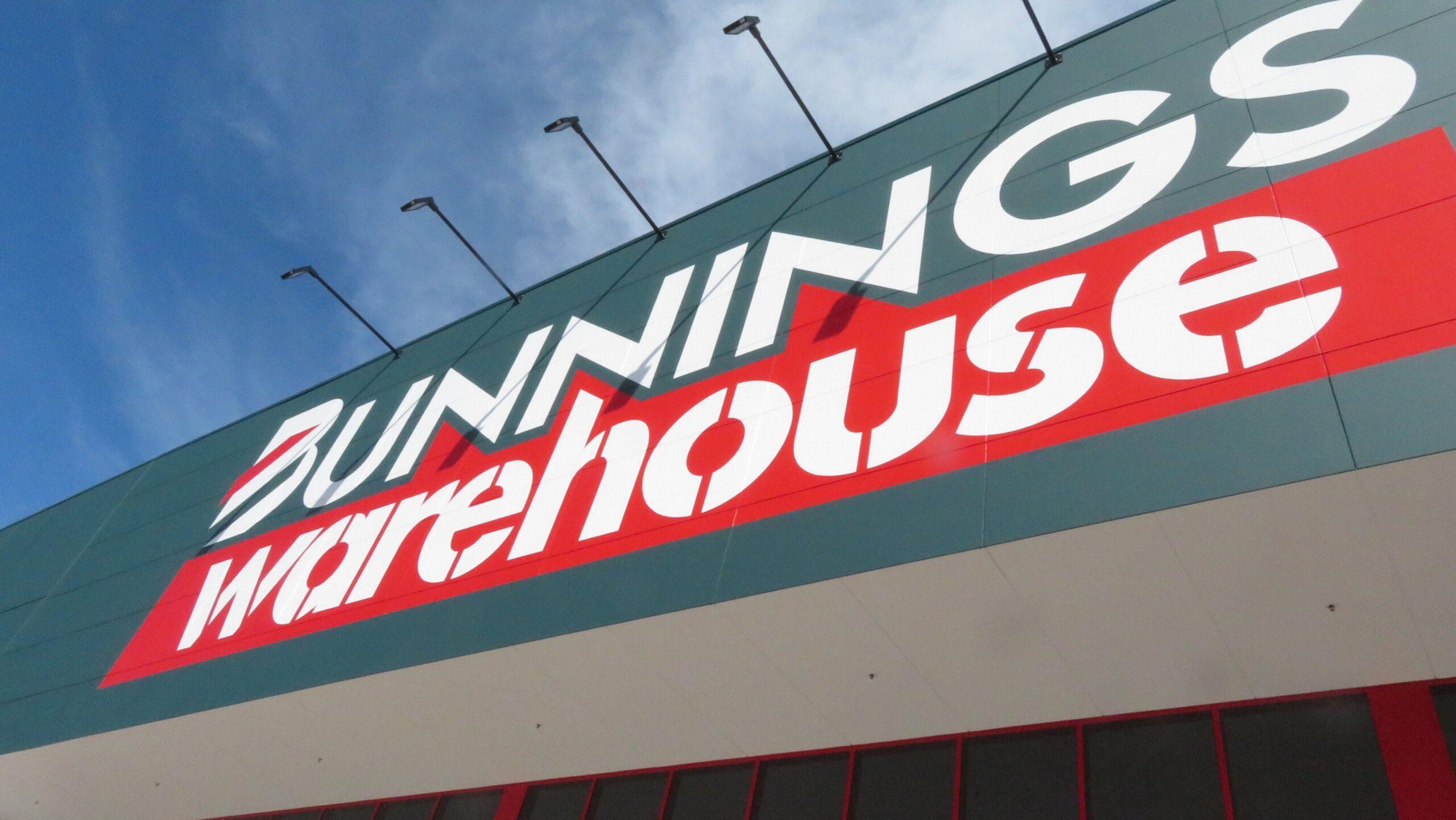
Bunnings has built a very strong brand. Credit: Ryan Smith.
Boost Juice
The Australian-born retail smoothie and juice franchise has successfully built brand loyalty among health-conscious consumers across the nation and overseas.
How it’s achieved brand loyalty:
- Health and freshness: Offers a range of nutritious smoothies and juices made from real fruit and vegetables. This commitment to health-conscious choices resonates with customers seeking a healthier lifestyle.
- Innovative menu: Continuously introduces new and seasonal items, keeping customers engaged and excited about trying its products. Limited-time promotions and special editions create urgency.
- Customer experience: Has a brand reputation for friendly staff and vibrant store environments. Engages with customers through fun and interactive marketing campaigns and promotions, creating memorable experiences.
- Loyalty program: The ‘Vibe Club’ allows customers to earn rewards and receive exclusive offers. The loyalty program incentivises repeat visits and customer engagement.
- Sustainability initiatives: Has made efforts to incorporate sustainability into its operations. This aligns with the values of environmentally conscious customers.
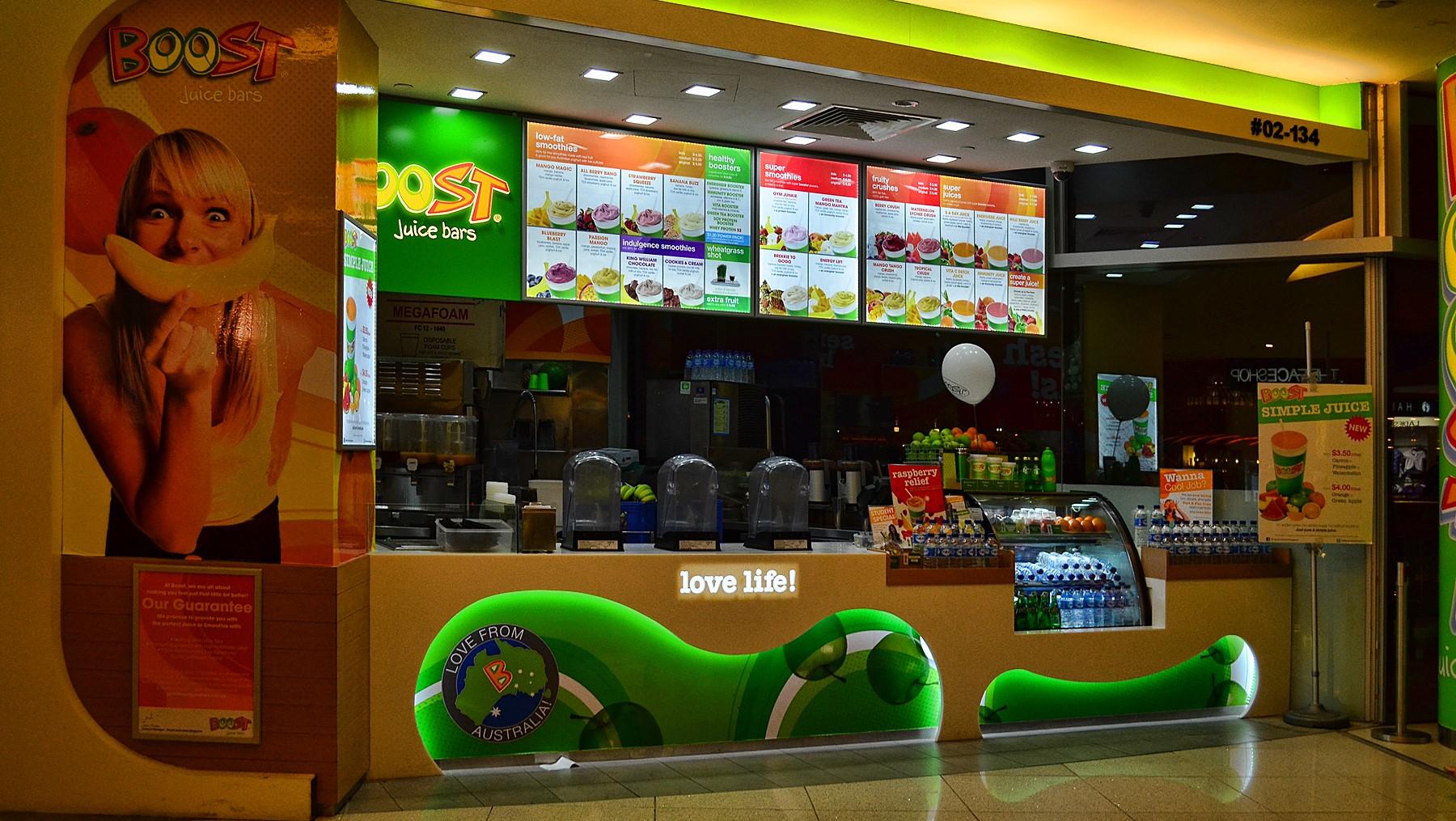
Boost Juice expertly recognises what its target audience really wants. Credit: Choo Yut Shing.
Lego
Known for its interlocking plastic bricks and other items, the time-honoured Danish toy company has achieved remarkable brand loyalty worldwide.
Adults who grew up playing with Lego as children often continue to purchase and engage with the brand, passing down the tradition to their own children.
How it’s achieved brand loyalty:
- Quality and innovation: Consistently produces high-quality products that stimulate creativity and imagination. Innovates by releasing new products to retain engagement.
- Nostalgia and multigenerational appeal: Elicits a strong emotional connection. Adults’ fond memories of playing with Lego in their childhood drives them to share the experience with the next generation.
- Community building: Actively fosters a sense of community among its fans through events, online forums, and user-generated content platforms. This builds a strong bond between the brand and its enthusiasts.
- Educational value: Has ventured into educational products that align with STEM learning, further solidifying its appeal as a brand that offers both fun and educational value.

Lego is a great example of a brand that easily creates positive associations. Credit: James A Molnar on Unsplash.
Starbucks
The American coffeehouse chain has achieved exceptional brand loyalty with a dedicated customer base that frequents its stores for coffee, snacks, and the overall experience.
How it’s achieved brand loyalty:
- Consistent quality: Maintains a constant standard of coffee quality across all its locations around the globe, which builds trust.
- Customer experience: Offers a comfortable and inviting atmosphere for patrons to relax, work, or socialise. Baristas are trained to create a personal connection with customers, making them feel valued.
- Customisation: Offers a high degree of customisation, allowing visitors to create their preferred coffee beverages by adjusting ingredients, flavours, and toppings.
- Rewards program: Starbucks Rewards offers incentives such as free drinks, birthday specials, and early access to promotions. This encourages repeat visits and customer engagement.
- Community engagement: Actively engages in community initiatives, such as supporting local charities, sustainability efforts, and hiring practices that promote diversity and inclusion. These initiatives resonate with socially conscious customers.

Customer satisfaction from New York to New Delhi. Credit: Angelica Reyes on Unsplash.
10 Strategies for Building Brand Loyalty – Summary
Creating long-term brand loyalty is a multifaceted effort that involves emotional branding, trust-building, delivering outstanding customer experiences, and the cultivation of brand advocates among more.
While a long game, it’s an investment in sustained business success via repeat visitation, word-of-mouth marketing, and the growth of a loyal customer base.
By following these tips and learning from proven examples, businesses of all types can generate brand loyalty that stands the test of time.
And what did we learn right at the very beginning?
Without loyalty, you won’t accomplish anything.
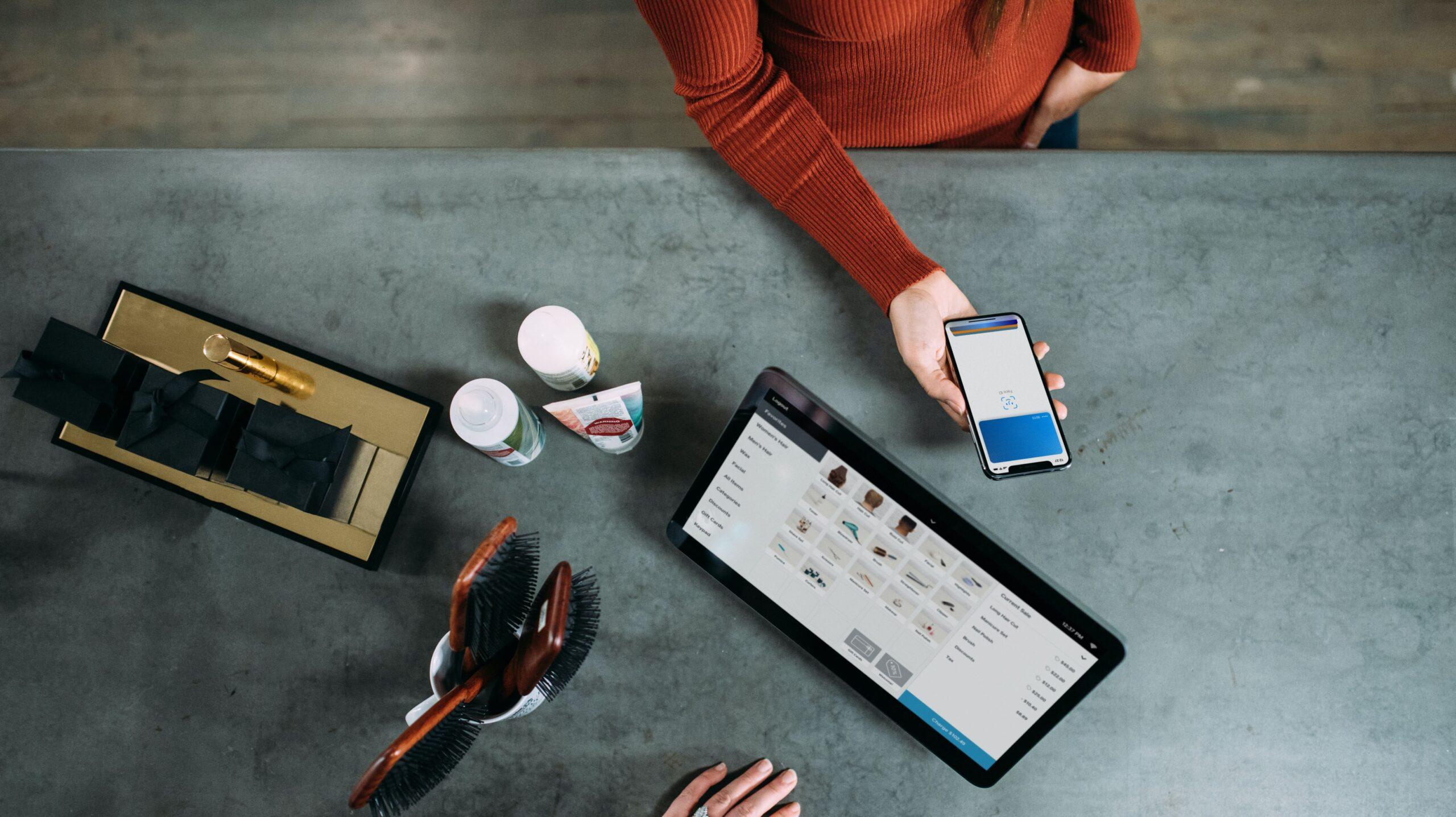
It’s all about the repeat visits. Credit: Blake Wisz on Unsplash.
Want Help to Build Brand Loyalty?
Do you need a hand with your strategies for acquiring and growing brand loyal customers?
You’re in the right place!
At Hunt & Hawk, we have tons of experience with developing marketing, branding, and sales strategies that drive growth and deliver success for a wide assortment of businesses.
Discover what we can do for your organisation. Contact us at hello@huntandhawk.com or book a meeting to chat.
For more marketing, branding, and sales tips and insights, check out more of our blog.


